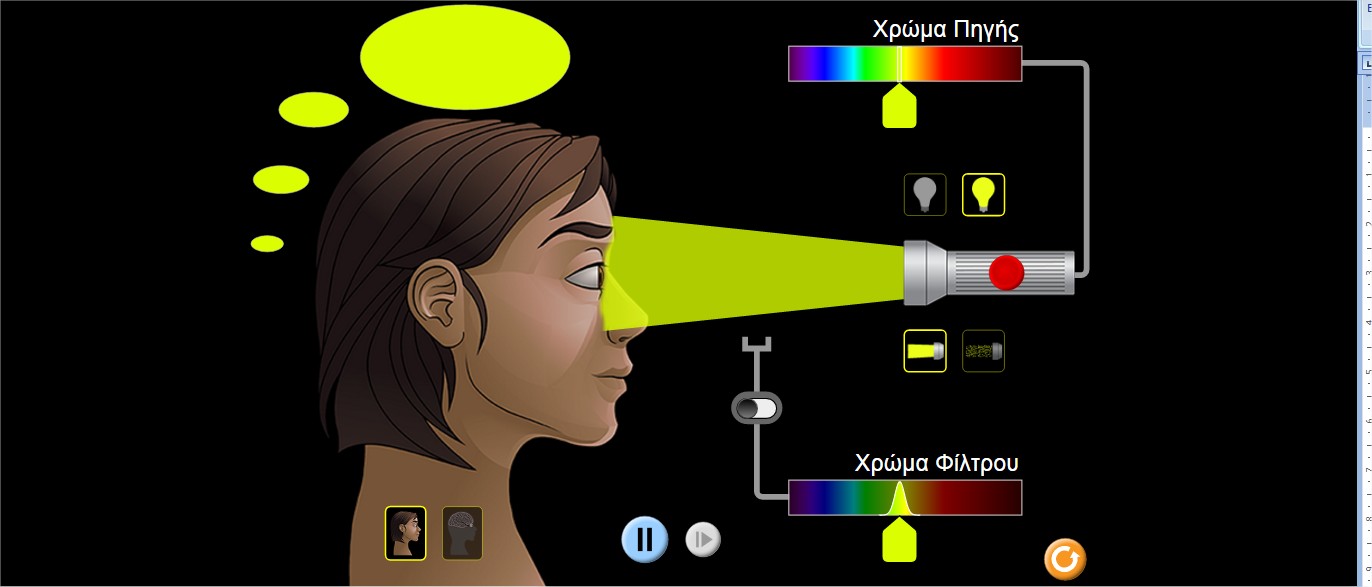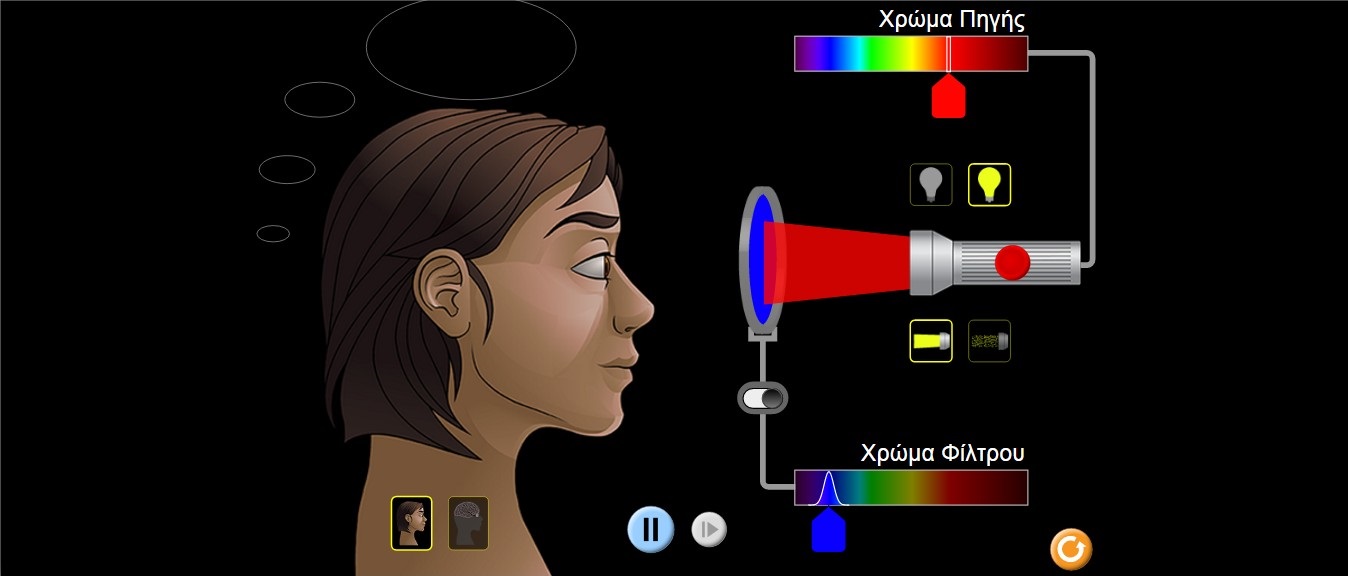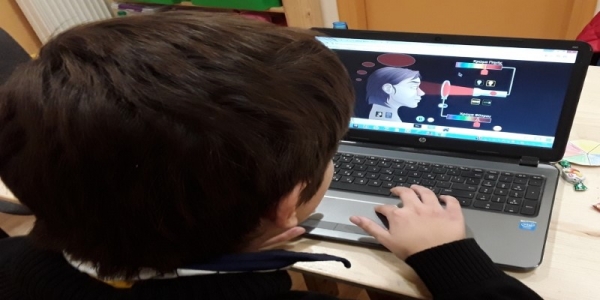Information & Communication Technologies (ICT) contribute definitely to science instruction, since they make use of direct manipulation of variables and objects, concept visualization and virtual experiment representation. They also create an environment that enhances motivation for learning and promote collaborative learning. Finally, they present the information in a multiple way, they emphasize the active role of the learner, they relate learning activities to everyday life and differentiate learning process.
e.g. Virtual Experiment on the color vision concept for middle schoolers
The following figure depicts light in terms of an electromagnetic radiation. Afterwards, teacher and students start talking about what is the electromagnetic spectrum of light about, the frequencies and wavelengths it consists of and the spectrum that corresponds to the visible light. For the study of optical phenomena, knowledge of the light spectrum is prerequisite.

Experimental procedure:
In that app, you can observe that the human brain perceives the yellow light of the lens

Teacher: If we place a transparent filter of the same color as the lens light in front of the lens, what do you expect to happen?
Student: Transparent materials let color pass the same color as the material, that is, the filter. So, we will see a yellow color.
Another student, after he chose red light in the lens and blue on the filter, noticed that the light did not pass.
Teacher: Why is this happening?
Student: The transparent filter is blue. So, it absorbs all the colors of light and lets only pass the blue. Since the light of the lens is red, it will not pass.

Another student remarked that when the lens is white (in other words, it contains all colors) and the filter yellow, then only the yellow color can pass, while the others will be absorbed.

Conclusions:
This software has triggered children's critical and creative thinking, as well as the feeling of pleasure and completeness, which stimulated their motivation. They also increased their interest and attention for a long time. They were not mere observers or listeners or recipients of information, but took an active role. Finally, a competition has been developed in terms of who will best explain the phenomenon they studied.




